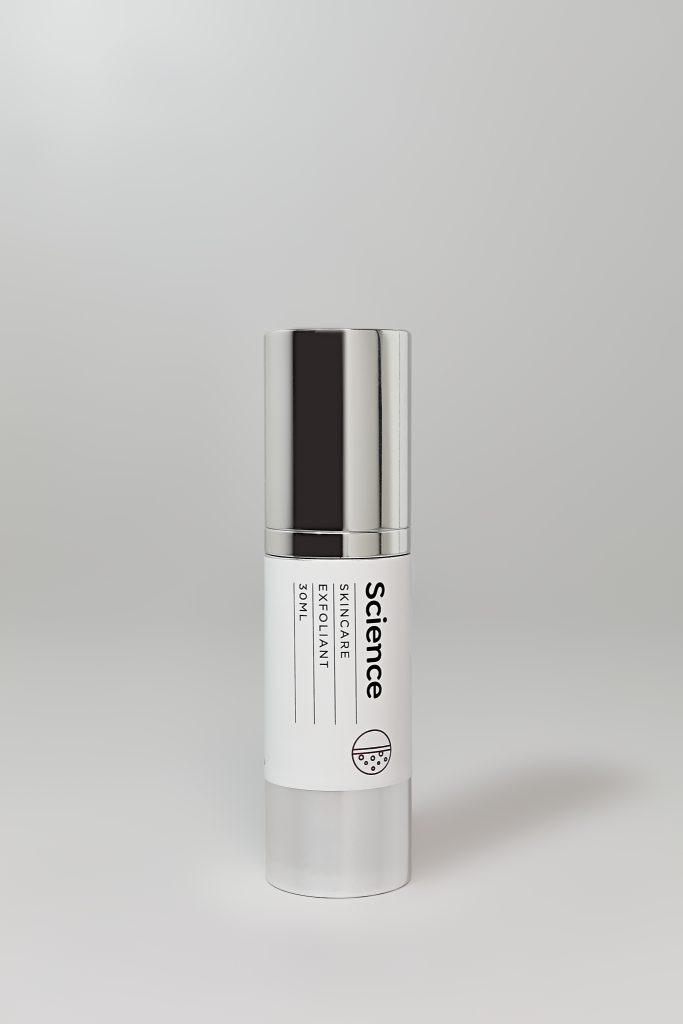

It’s acne awareness month and we help unravel the confusion between scrubs and serums for exfoliating skin.
Even the best skincare products are useless on top of layers of dead skin cells. Dead skin cells and debris build up on the top layer of the skin and often cause clogged pores, breakouts, and a dull-looking complexion. Exfoliating is an essential step in everyone’s skincare routine, regardless of skin type. It helps remove dead skin cells and impurities from the surface of the skin to promote a healthy and radiant complexion and aid in absorbing the rest of your skincare products better.
Physical exfoliation (face scrub) is the so-called traditional type of exfoliating the skin, often by using abrasive products that buff away the dead skin cells. Physical exfoliants like scrubs, brushes or procedures, such as dermabrasion, exfoliate the skin mechanically. Physical exfoliation presents a higher risk of adverse reactions than the chemical because it causes friction and can be harsh on the skin. It can also contribute to redness and broken capillaries. When you use the physical method of exfoliation you can control the pressure you apply but often the abrasive particles are different in size and the larger ones can cause micro tears to the skin that lead to irritation.
Chemical exfoliation (serum) sounds scary to many while it is in fact, a lot more gentle than the physical one. Chemical exfoliation involves the use of acids (salicylic acid, lactic acid, mandelic acid, malic acid, glycolic acid, azelaic acid, etc.) in different concentrations and blends that essentially work by breaking the bonds between the dead skin cells or dissolving the sebum in clogged pores. It is also a little-known fact that acidifying the top layer of the skin stimulates the body to develop natural moisturising factors (NMF) and so gives a plumping and moisturising effect. This results in shedding of the dead skin cells in different cycles to reveal brighter and rejuvenated skin. Chemical exfoliants are often used in the form of cleansers and serums.
Chemical exfoliation is considered safer and more effective than the physical type when used regularly. It can also target several skin concerns with one product, for example, an exfoliating serum like the Science Skincare Exfoliant Serum brightens the complexion while calming acne using the active ingredient chlorophyll. The right concentration of acids and consistency are the key factors in achieving smoother and healthier skin.
Chemical Exfoliation: How it Works and Benefits
There are three main categories of acids used in skincare: AHA (alpha-hydroxy acids), BHA (beta-hydroxy acids) and PHA (poly-hydroxy acids):
AHA – are water-soluble and suitable even for sensitive, dry and sun-damaged skin. Common AHAs include lactic and glycolic acids that brighten the skin while also leaving a moisturising feel to it;
BHA – are oil-soluble acids that penetrate deeper into the pores, making them perfect for oily and acne-prone skin types. Salicylic acid is the most popular BHA, known to reduce inflammation and control oil production;
PHA – is similar to AHA but having larger molecular size which means it presents the lowest risk of irritation out of the three. It is considered safe even for people with eczema and rosacea.
It is important to start using chemical exfoliants slowly and build up tolerance gradually. You can do a patch test before applying such products to the entire face and start by using just two to three times a week for the first month. The proper use of acids helps remove dead skin cells and as a result, reveals a healthier, more radiant complexion. This is also beneficial when it comes to the absorption of other skincare products in the regimen, as they sink in better. Chemical exfoliation makes the skin more sensitive to the UV rays, so make sure to always protect the skin with sunscreen. Do not mix too many acids in a single day and consult a specialist in case you want to try combinations of acids.
Recognising when you need to be exfoliating and when to taper off is essential in finding the best solution for your skin. If it appears rough and dull, and your products don’t seem to work, then you might have a buildup of dead skin cells. Many, who start exfoliating, want to see quick results and tend to reach for concentrations that are too high and apply them daily. This approach is too aggressive for the skin and almost certainly leads to inflammation, redness, irritation, dryness, breakouts, and peeling of the skin. Make sure to start slowly and use lower concentrations less frequently to help your skin adapt to the product and allow the product to work effectively
Subscribe for skin health innovations, exclusive offers and SO much more!




